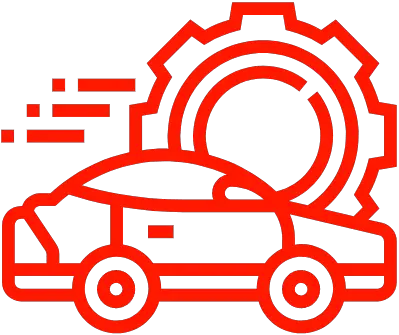What Does It Mean When Your Gas Pedal Stops Working?
When your gas pedal stops working, it means that your car is no longer able to accelerate when you press the pedal. This can be caused by a variety of issues, such as a faulty wiring connection, an issue with the fuel system, or a problem with the accelerator pedal itself. In some cases, it may be a sign of a more serious underlying issue with your car’s engine. It is important to have this issue diagnosed and repaired as soon as possible to avoid further damage to your vehicle.
Identify the Symptoms
When your gas pedal stops working, it can be difficult to determine the exact cause of the issue. Some common symptoms include a lack of power when accelerating, a jerking or stalling response when you press the accelerator, and an overall decrease in fuel efficiency. It’s important to note that these symptoms can be caused by a variety of issues, so it is important to diagnose the problem accurately before attempting any repairs.
Check the Mechanical Linkage
The first step in diagnosing a non-functioning gas pedal is to check the mechanical linkage between the pedal and the engine. This linkage is responsible for transmitting your foot movements into acceleration. If this connection is loose or broken, then it can cause your gas pedal to become unresponsive or have reduced power when pressed. To check this, you’ll need to remove any covers over the linkage and then visually inspect it for signs of wear and tear or loose connections. If necessary, you should also use a wrench or screwdriver to tighten any loose bolts on either end of the linkage.
Faulty Sensor or Electrical Issue
Another possible cause of a non-functioning gas pedal is a faulty sensor or electrical issue. Modern vehicles are equipped with various sensors that help control acceleration and fuel efficiency. If one of these sensors becomes faulty or malfunctions, then it can lead to an unresponsive pedal and reduced power when accelerating. The best way to diagnose this issue is by using an OBD-II scanner tool and checking for any trouble codes related to sensor failure.
Malfunctioning Throttle Body
The throttle body is responsible for controlling air flow into the engine and helps regulate acceleration as well as fuel efficiency. If there is an issue with this component, then it can result in an unresponsive pedal as well as reduced power when accelerating. To diagnose this issue, you’ll need to remove any covers over the throttle body and visually inspect it for signs of wear and tear or dirt buildup that could be causing an obstruction in airflow. You’ll also want to use a multimeter or scan tool to check for any electrical inconsistencies with your vehicle’s wiring system which may be causing interference with your throttle body’s operation.
Clogged Air Filter
Finally, if your air filter has become clogged with dirt or debris then this can also lead to an unresponsive gas pedal as well as decreased fuel efficiency due to restricted airflow into your engine’s combustion chamber(s). To diagnose this issue, you’ll need to remove your air filter cover and then inspect it for signs of clogging such as dirt buildup on its surface area which could be reducing airflow into your engine’s combustion chamber(s). You may need to replace your air filter if necessary in order for it function properly again.
What Does it Mean When Your Gas Pedal Stops Working?
A malfunctioning gas pedal can be a major problem for any driver. If your gas pedal stops working, it could mean that there is an issue with the electrical system, mechanical linkage, or a malfunctioning part. It can be difficult to diagnose the exact problem without the help of a professional. However, there are some tips you can follow to ensure that your gas pedal is working properly and that you don’t run into any issues while driving.
Inspect the Electrical System and Connections
The first step in diagnosing a malfunctioning gas pedal is to inspect the electrical system and connections. This includes checking for loose wires, corroded cables, or any other signs of damage. If any of these components are damaged, it could cause your gas pedal to not function properly. You should also check for frayed wires or exposed terminals as these could also be causing an issue with your gas pedal’s performance.
Examine the Mechanical Linkage
The next step is to examine the mechanical linkage between the gas pedal and engine. This includes checking for worn-out parts or anything else that could be causing an issue with how the linkages work together. If you find anything wrong here, it may be necessary to replace certain parts in order to get your gas pedal back up and running properly again.
Test for Malfunctioning Parts
Finally, you should test each component of the system individually in order to determine if any part is malfunctioning or needs replacement. This includes checking things like throttle position sensors, air intake valves, fuel injectors, and more. If any of these components are not working properly then they need to be replaced or repaired in order for your car’s performance to return back to normal levels once again.
Tips for Ensuring Proper Function of a Gas Pedal
To ensure that your gas pedal continues functioning properly over time, make sure that you regularly check for signs of wear and tear on all components related to its operation. Additionally, scheduling regular maintenance inspections by a professional mechanic can help you identify any potential problems before they become more serious issues down the road. Keeping up with regular maintenance inspections will also help extend the lifespan of your vehicle’s components as well as reduce costly repairs in the future due to negligence on your part when it comes to taking care of them over time
FAQ & Answers
Q: What could cause my gas pedal to stop working?
A: There are a few potential causes for a non-functioning gas pedal, including a mechanical linkage issue, faulty sensor or electrical issue, malfunctioning throttle body, or a clogged air filter.
Q: How can I diagnose why my gas pedal is not working?
A: To diagnose the issue, you should first identify the symptoms of the non-functioning gas pedal, inspect the electrical system and connections, examine the mechanical linkage, and test for any malfunctioning parts.
Q: What should I do to ensure my gas pedal works properly?
A: To ensure that your gas pedal is working properly you should regularly check for signs of wear and tear, as well as schedule regular maintenance inspections with a professional mechanic.
Q: Are there any risks associated with a non-functioning gas pedal?
A: If your gas pedal stops working suddenly while driving it can be very dangerous. You may not be able to slow down or stop quickly enough if necessary and risk causing an accident.
Q: How important is it to get my gas pedal inspected regularly?
A: It is important to get your gas pedal inspected regularly in order to prevent any major issues from occurring. Regular inspections will help you identify any small problems before they become bigger ones that require extensive repairs.
In conclusion, when a gas pedal stops working it can be a sign of an issue with the vehicle. It could be a malfunctioning throttle body, worn out wiring, or an issue with the fuel system. Having the car checked out by an experienced and qualified mechanic is the best way to diagnose and repair any problem with the gas pedal. With proper care and maintenance, you can ensure your car runs properly for years to come.
Author Profile

-
With more than 30 years in the bicycle industry, I have a strong background in bicycle retailing, sales, marketing and customer service. I have a passion for cycling and a dedication to excellence. As a manager, I worked diligently to increase my capabilities and responsibilities, managing up to eleven mechanics (at Palo Alto Bicycles) and later as a working partner in my own store.
As the shop owner of Spoke n’ Word Cycles in Socorro, NM, the success of the mission was my responsibility, which I pursued passionately since we opened in 2003 through the spring of 2011. I am adept at managing owned and loan inventory, preparing weekly & annual inventory statements, and managing staff. The role as managing partner also allowed me tremendous freedom. I used this personal freedom to become more deeply involved in my own advancement as a mechanic, to spearhead local trail building, and advocating for cycling both locally and regionally.
As a mechanic, I have several years doing neutral support, experience as a team mechanic, and experience supporting local rides, races, club events. I consistently strive to ensure that bicycles function flawlessly by foreseeing issues and working with the riders, soigners, coaches and other mechanics. Even with decades of experience as a shop mechanic and team mechanic, and continue to pursue greater involvement in this sport as a US Pro Mechanic, and UCI Pro Mechanic.
Latest entries
- July 26, 2023BodyFind the Best Grill for Your 2007 Toyota Tacoma – A Complete Guide
- July 26, 2023BodyUpgrade Your Ford Escape with the Best 2008 Grill – Here’s How!
- July 26, 2023Bumper Stickers, Decals And MagnetsBest Chevy 1500 Door Emblem: Upgrade Your Truck with a Stylish Emblem
- July 26, 2023Marker Light AssembliesGive Your 2008 Dodge Dakota a Makeover with the Best Grill Upgrade
